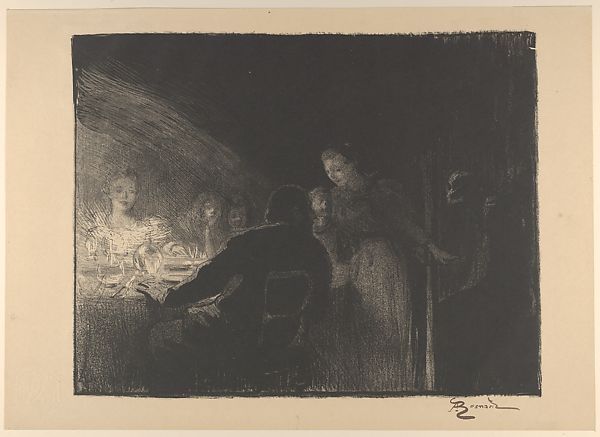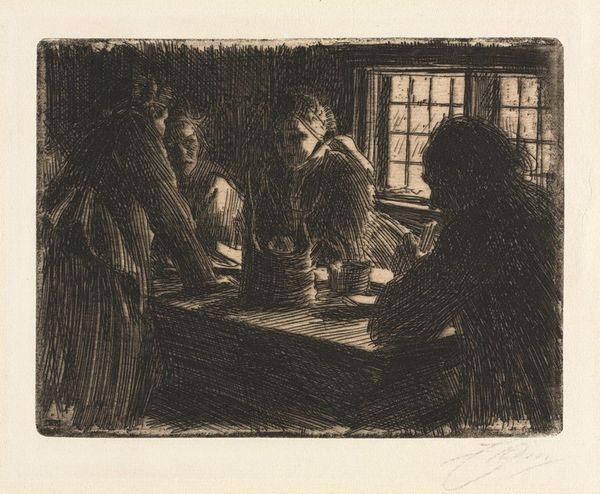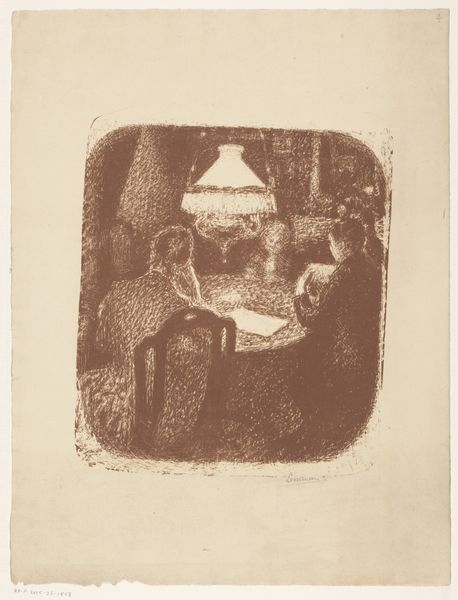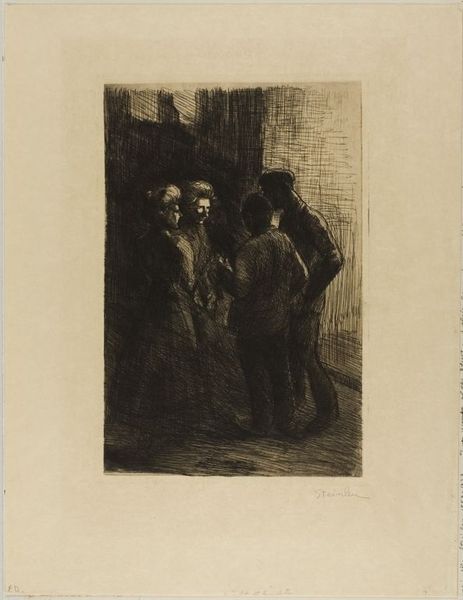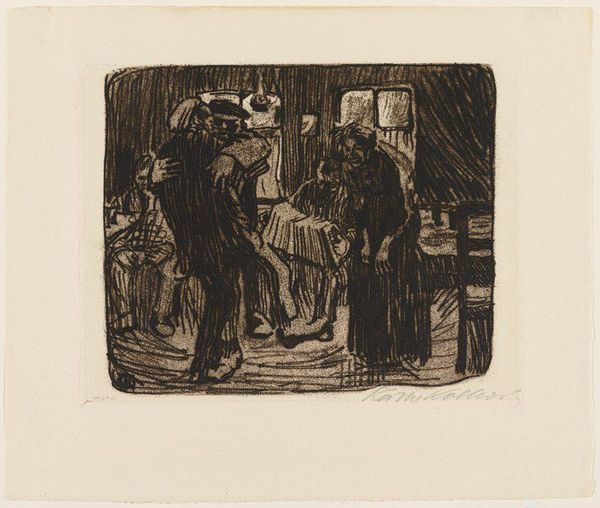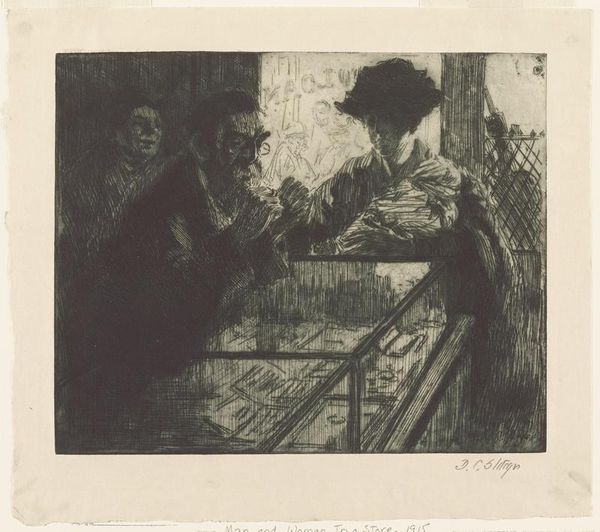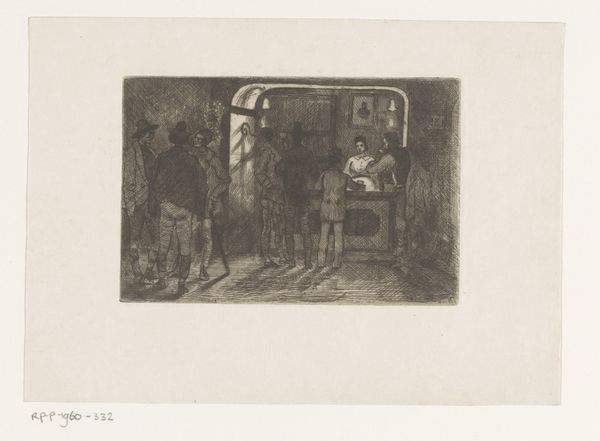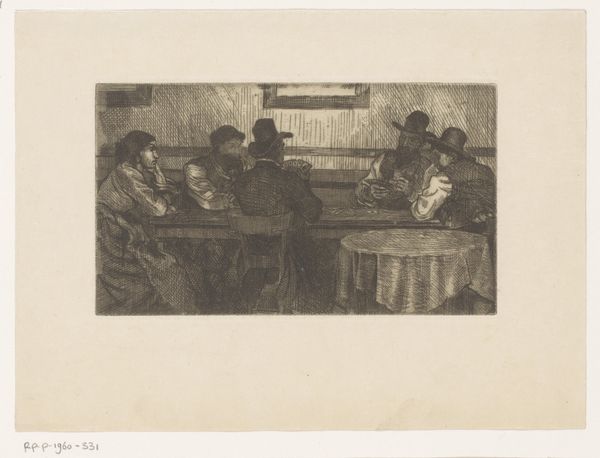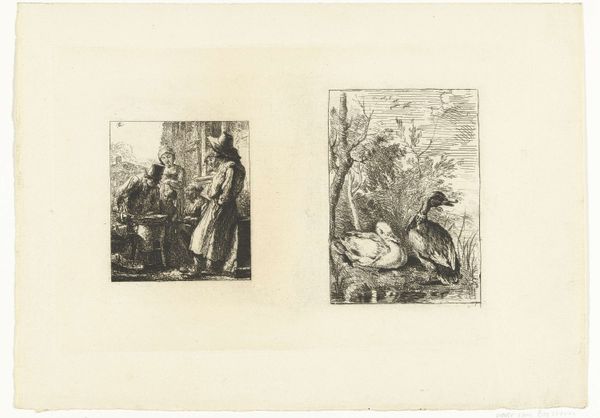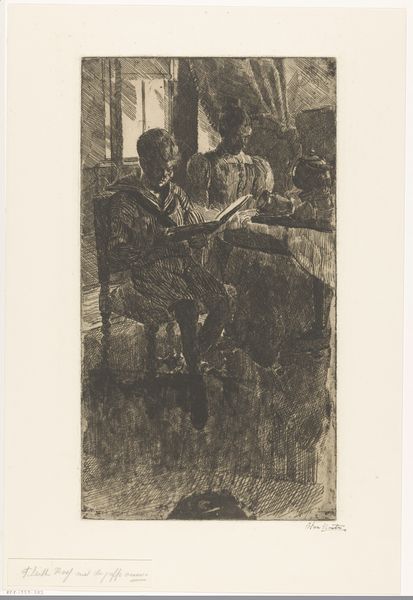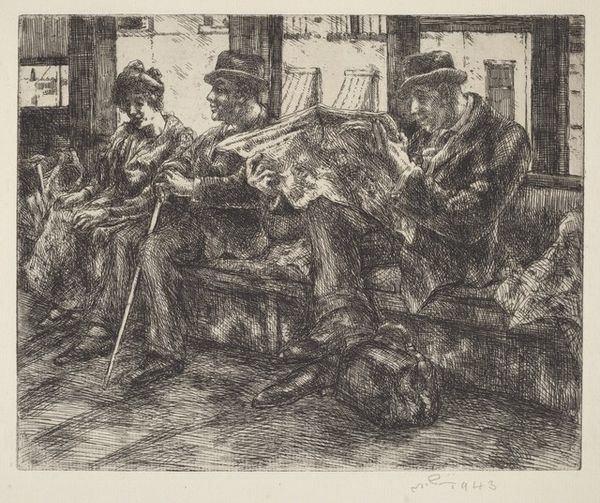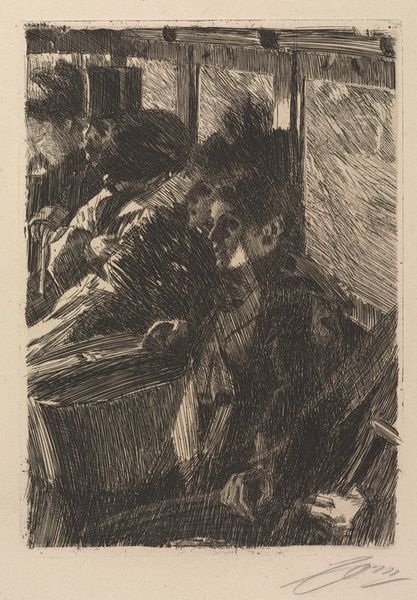
print, etching
#
medieval
#
narrative-art
# print
#
etching
#
etching
#
german-expressionism
#
figuration
#
genre-painting
Dimensions: 4 9/16 × 5 11/16 in. (11.59 × 14.45 cm) (image)5 1/8 × 6 1/8 in. (13.02 × 15.56 cm) (plate)5 7/8 × 6 11/16 in. (14.92 × 16.99 cm) (sight)16 1/8 × 20 3/16 × 1 in. (40.96 × 51.28 × 2.54 cm) (outer frame)
Copyright: No Copyright - United States
Editor: So, this is "Men in a Tavern" by Käthe Kollwitz, an etching from around 1892. The mood feels...heavy, claustrophobic almost. What do you see in this piece? Curator: It's interesting you pick up on that weightiness. For me, Kollwitz’s work always speaks to the socio-political climate she inhabited. Consider the era: late 19th-century Germany, rife with industrialization, poverty, and simmering social unrest. How do you think that context plays into this scene of men in a tavern? Editor: I guess I hadn't thought about it so directly. So, is this just men drinking or a wider critique of social issues? Curator: Perhaps both? Kollwitz, as a woman artist in that time, often centered the lives of working-class people, their struggles and resilience. Are these men simply seeking solace, or are they a powder keg of disenfranchisement? Think about the tradition of the tavern as a gathering place—a site for both camaraderie and potential revolt. Also, it is key to think about the historical conditions around this: the end of the Anti-Socialist Laws which had major political repercussions on gender, class and politics. Do you think Kollwitz is sympathetic to her subjects? Editor: That adds a whole new layer to it. Seeing it not just as an image of men, but of their societal circumstances and the potential energy within that space. Maybe she is, in a subtle way, capturing both their struggle and humanity? Curator: Precisely! Kollwitz’s genius lies in her ability to portray individuals embedded in larger systems of power and oppression. By centering these working-class men, she is, in fact, subtly confronting the dominant narrative of her time. Editor: It makes me think differently about who gets to be represented in art and what their stories tell us about the world around them. Thank you. Curator: And that perspective helps us confront inequities still present in today’s world as well. A valuable thing to remember as you continue to look at, and make art.
Comments
No comments
Be the first to comment and join the conversation on the ultimate creative platform.

